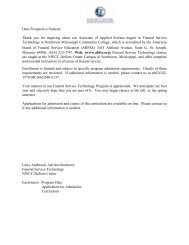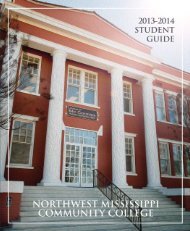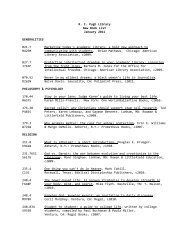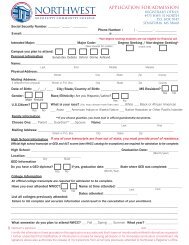Coping with Seven Disruptive Personality Types in the Classroom
Coping with Seven Disruptive Personality Types in the Classroom
Coping with Seven Disruptive Personality Types in the Classroom
You also want an ePaper? Increase the reach of your titles
YUMPU automatically turns print PDFs into web optimized ePapers that Google loves.
was a potential threat. She worked out a code word <strong>with</strong> somebody <strong>in</strong> an outer office so thatif someth<strong>in</strong>g happened, she could covertly alert o<strong>the</strong>rs to come <strong>in</strong> and <strong>in</strong>tervene.Aga<strong>in</strong>, it is not anger, per se, to watch out for: it is <strong>the</strong> behavior. If behavior is highlyunacceptable, <strong>in</strong>clud<strong>in</strong>g obscenities, scream<strong>in</strong>g, and so on, <strong>the</strong>n it is time to use <strong>the</strong> securitypeople on campus and document <strong>the</strong> event. Documentation is very important.Respond<strong>in</strong>g to disruptive “good” behavior, such as want<strong>in</strong>g to answer everyquestion:Want<strong>in</strong>g to answer every question is not exactly “good” behavior. Students need to learn howto share <strong>the</strong> limelight <strong>with</strong> each o<strong>the</strong>r. A student who is overeager to answer each questionmight be told <strong>in</strong> <strong>the</strong> privacy of <strong>the</strong> <strong>in</strong>structor’s office that this eagerness to answer questionsand participate is duly appreciated, but that she needs to harness some of her enthusiasm <strong>in</strong>order to allow classmates <strong>the</strong> opportunity to share <strong>the</strong>ir answers as well.If <strong>the</strong> behavior persists after this discussion, <strong>the</strong> <strong>in</strong>structor may need to both ignore <strong>the</strong>student’s repeated hand-wav<strong>in</strong>g and issue a stronger admonition or warn<strong>in</strong>g.Provid<strong>in</strong>g protection under <strong>the</strong> American <strong>with</strong> Disabilities Act (ADA) for astudent <strong>with</strong> Tourette Syndrome or similar affliction:A student <strong>with</strong> Tourette Syndrome, a neurological disability, is def<strong>in</strong>itely entitled to legallymandated accommodations under ADA. However, it is important for <strong>in</strong>structors andadm<strong>in</strong>istrators to understand that <strong>the</strong>re is a legal pr<strong>in</strong>ciple that can be stated as follows: “Nocollege or university is prohibited from discipl<strong>in</strong><strong>in</strong>g a student for misconduct even if thatmisconduct is a symptom or manifestation of a disability. In o<strong>the</strong>r words, a physical orpsychiatric disability does not, <strong>in</strong> itself, afford a student immunity from discipl<strong>in</strong>arysanctions for misconduct.”Deal<strong>in</strong>g <strong>with</strong> bully<strong>in</strong>g behavior and threats:Here is a hypo<strong>the</strong>tical situation: A group of large football players surround a professor andthreaten him <strong>with</strong> <strong>the</strong> ultimatum of giv<strong>in</strong>g <strong>the</strong>m all As or fac<strong>in</strong>g <strong>the</strong> prospect of hav<strong>in</strong>g hishome burned down or one of his family members attacked. This is reported to <strong>the</strong>adm<strong>in</strong>istration, and <strong>the</strong> students respond by say<strong>in</strong>g, “We were only kidd<strong>in</strong>g. Can’t you take ajoke?”42


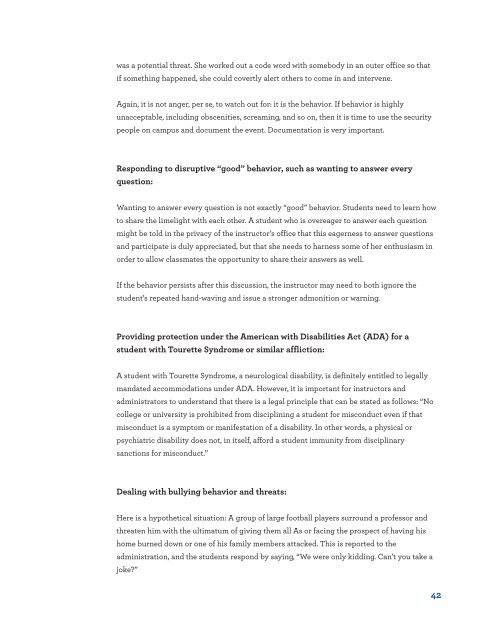

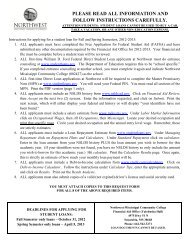




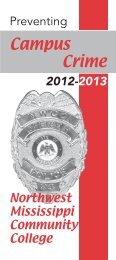

![Pro-Dental Hygiene [Major Code T34] - Northwest Mississippi ...](https://img.yumpu.com/35524032/1/190x149/pro-dental-hygiene-major-code-t34-northwest-mississippi-.jpg?quality=85)
